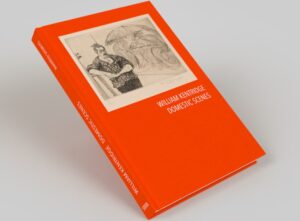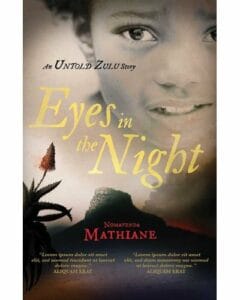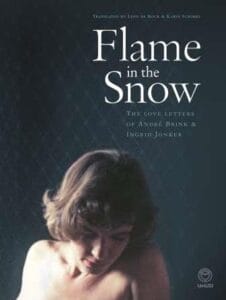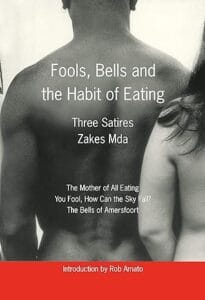Doing Hair: Art and Hair in Africa
R170Catalogue of the Exhibition, Wits arts Museum, 2014 This publication accompanies an exhibition of the same title at Wits art Museum, 20 August – 2 November 2014.
Showing 49–64 of 523 results

Catalogue of the Exhibition, Wits arts Museum, 2014 This publication accompanies an exhibition of the same title at Wits art Museum, 20 August – 2 November 2014.

Domestic Scenes feature the entire 54 images of Kentridge’s early series of work Domestic Scenes (1980). Domestic Scenes is published by Steidl, an international publisher of photobooks, and features an exquisite hard cover design with Kentridge’s signature on the cover page and a beautiful A1 poster of a photograph of young William Kentridge in his Parktown studio in Johannesburg, South Africa.

Epainette Mbeki (née Moerane) (born February 16, 1916) is the mother of former South African president Thabo Mbeki and widow of political activist Govan Mbeki. A Humble Journey On Her Footprints is the brainchild of writer and photographer Ndabula. She explains: “When I met Umama I was truly humbled. I felt there was a need…

The first publication of photographs taken by Ernest Cole in the United States during the turbulent and eventful late 1960s and early 1970s.

In this way, the collection is varied, and very personal and true to Anton’s past and present, a very satisfying buffet that offers a unique taste of his Buddhistic soul.
 Out of stock
Out of stockThe origins of this book lie in David Goldblatt’s (1930–2018) simple observation that many of his fellow South Africans are the victims of often violent crime. And so began Ex Offenders at the Scene of Crime, for which Goldblatt photographed criminal offenders and alleged offenders at the place that was probably life-changing for them and their victims: the scene of the crime or arrest.

Nomavenda Mathiane stumbled upon her grandmother’s story well over a century after the gruelling events of the Battle of Isandlwana that formed her life. Astounded to hear how her grandmother had survived the 1879 Anglo-Zulu War between the British and Zulu nations as a young girl, Mathiane spent hours with her elder sisters reconstructing the extraordinary life of their grandmother. The result is a sweeping epic of both personal and political battles.
Eyes In The Night is a young Zulu woman’s story of drama, regret, guilt and, ultimately, triumph – set against the backdrop of a Zululand changed beyond recognition.
A true story almost lost, but for a chance remark at a family gathering.

In a whirlwind of local history, contemporary culture, domestic angst, and nostalgia, Thabo Jijana’s debut collection of award-winning poems exhibits an emotional wisdom beyond the writer’s years.

Statues are one of the most visible – and controversial – forms of historical storytelling. The stories we tell about history are vital to how we, as societies, understand our past and create our future. So whose stories do we tell? Who or what defines us? What if we don’t all agree? How is history made, and why? FALLEN IDOLS looks at twelve statues in modern history. It looks at why they were put up; the stories they were supposed to tell; why those stories were challenged; and how they came down. History is not erased when statues are pulled down. If anything, it is made.

This is the first, self-published catalogue of Phumlani Ntuli’s work. It serves as a personal archive around his artistic practice, focusing on three major exhibitions that took place between 2021 and 2022.

This user-friendly, richly illustrated field guide features more than 700 southern African succulents, focusing on the most interesting and commonly encountered species. An introduction to families and their key features will help readers identify the relevant plant group, while concise accounts describing the plants’ diagnostic features, along with distribution maps, will enable quick ID of species.

In a telegram dated 29 April 1963, thirty-year-old Afrikaans poet Ingrid Jonker thanks André Brink, a young novelist of twenty-eight, for flowers and a letter he sent her. In the more than two hundred letters that followed this telegram, one of South African literature’s most famous love affairs unfolds. Jonker’s final letter to Brink is dated 18 April 1965. She drowned herself in the ocean at Three Anchor Bay three months later.
 Out of stock
Out of stockThis book takes the reader on a thematic journey through the rooms of a former house in Cape Town that Association for Visual Arts (AVA) has, since 1971, called home.

Cupidity, corruption and conciliation are the themes of the three plays in this collection from one of South Africa’s leading writes. The Mother of all Eating, a one-hander, with its central character a corrupt Lesotho official, is a grinding satire on materialism in which the protagonist gets his come-uppance.You Fool, How Can the Sky Fall? is an unbridled study in grotesquerie, reflecting a belief, traceable throughout Mda’s work, that government by those who inherit a revolution is almost inevitably, in the first decade or two, hijacked by the smart operators.

Monograph to accompany painter Georgina Gratrix’s exhibition, The Reunion.

Joana Choumali is fascinated with African people of different social origins who proudly display their facial scarification. But the practice is disappearing in her native Ivory Coast and the surrounding countries, due to pressure from religious and state authorities and urban practices. Choumalis work involves the link between past and present, as well as self-image. For this project she sought out the last generation of people who bear the imprint of the past on their faces. What was once the norm, indicating social standing or tribe, is now excluded. Through portraits and testimonies, the series illustrates the complexity of identity in contemporary Africa, torn between its past and future.
No products in the basket.